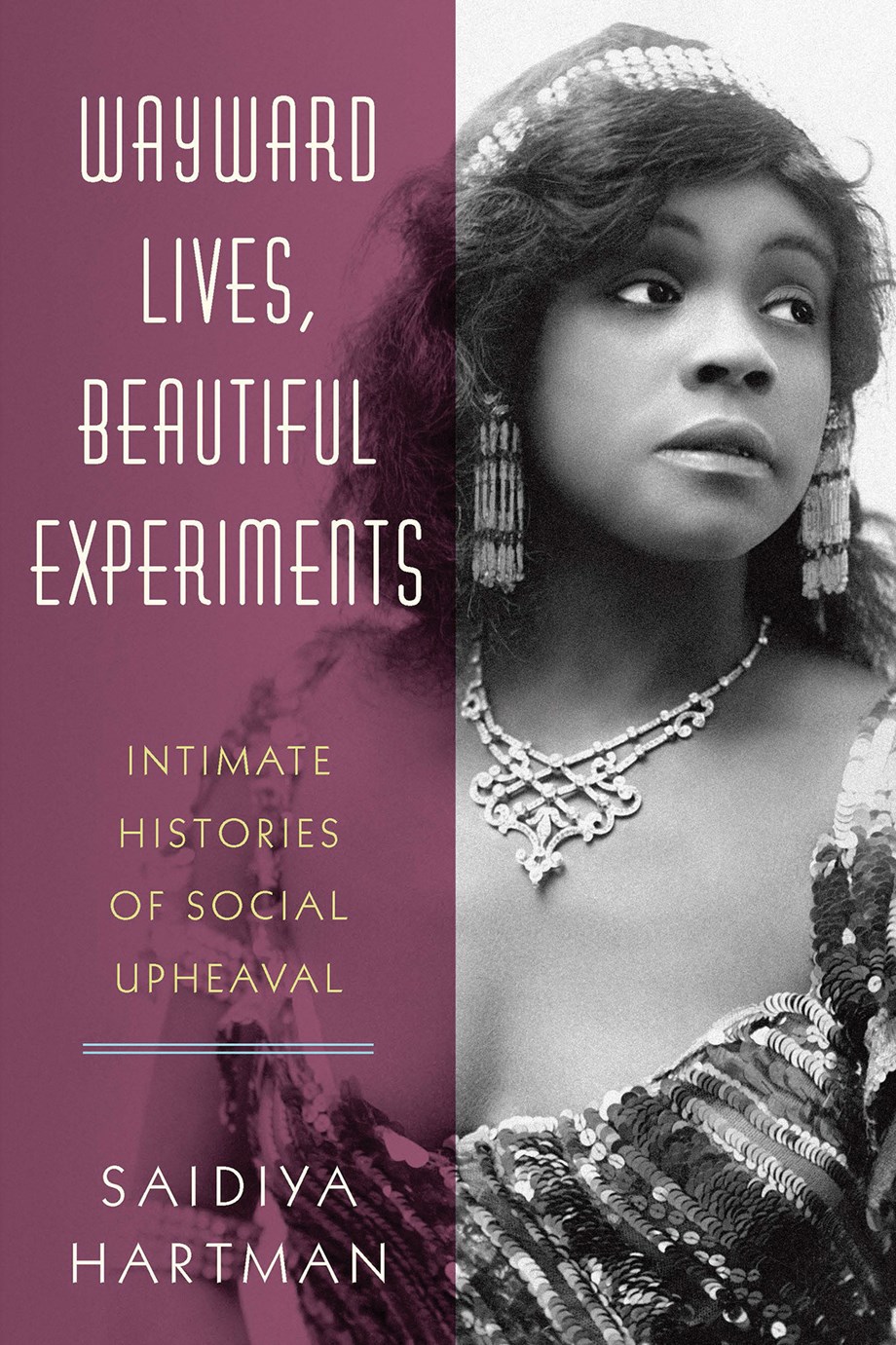Saidiya Hartman’s Wayward Lives, Beautiful Experiments is about the radical sexualities and the aesthetics of waywardness that young black women introduced into early twentieth-century American life. While key cultural figures such as Ida B. Wells, W. E. B. Du Bois, and fourteen year-old Eleanor Fagan (aka Billie Holiday) appear in these pages, Hartman’s narrative focuses on round-the-way girls, “gender-queer strollers,” lesbian chorines, and working-class intellectuals like Mattie Jackson, Gladys Bentley, Esther Brown, and Mabel Hampton — women overlooked historically and otherwise invisible in official archives.
Hartman opens her experimental book, explaining that she’s written from “the nowhere of the ghetto and the nowhere of utopia.” Hartman takes us “there,” to that elsewhere on the “margin,” that black, blurry nowhere in the wake of American history. There, the author argues, is the culture’s actual core, the very seedbed of American modernism: young black women yielding “a thousand new forms and improvisations” on love and liberation. Paying close attention to the “nowhere” Negro zones in turn-of-the-twentieth-century Philadelphia and New York, Hartman cycles through an array of photographs, police reports, prison case files, diaries, sociological studies, autobiographies, and personal correspondence in order to articulate the voices of radical black womanhood.
When Hartman calls this book an album, she means it doubly: it’s a thing to look at, to examine, and a thing to listen closely to. Note the troubling vision of Thomas Eakins’ African American girl nude, reclining on couch (ca. 1882) early in these pages. Hartman studies the image closely, enhancing and critiquing the cruel radiance it exudes. Employing a mode of close narration, Hartman inseparably relates her voice to the photographed girl’s. Here’s the author listening to this image. Hartman practices close reading, close listening, and close narration throughout in order to improvise what she calls the “fugitive” chorus informing the book. “[Y]ou can hear the whole world in a bent note, a throwaway lyric, a singular thread of the collective utterance. Everything from the first ship to the young woman found hanging in her cell . . . A tome of philosophy in a moan. In the deepest, darkest recesses of an opaque song, it is clear that life is at stake.”
Hartman’s gift for citing and interpolating sounds, notions, concepts, and ideas from poets, philosophers, novelists, art and literary critics, blues, jazz, and funk singers gives the work a rising trajectory, one that helps us imagine Sula Peace’s wayward decade and offers a kind of genealogy for Meshell Ndegeocello’s queer millennial funk. Thus, the book’s choral effect resonates concentrically, both directions at once, not leader and mass, but headless, propelling radical black transformations. Wayward Lives, Beautiful Experiments moans sensually and philosophically, adding bright, round, gorgeous newness to the extended ring shout of the African American critical tradition.
— Walton Muyumba


 Wayward Lives, Beautiful Experiments: Intimate Histories of Social Upheaval by Saidiya Hartman (W.W. Norton)
Wayward Lives, Beautiful Experiments: Intimate Histories of Social Upheaval by Saidiya Hartman (W.W. Norton) 